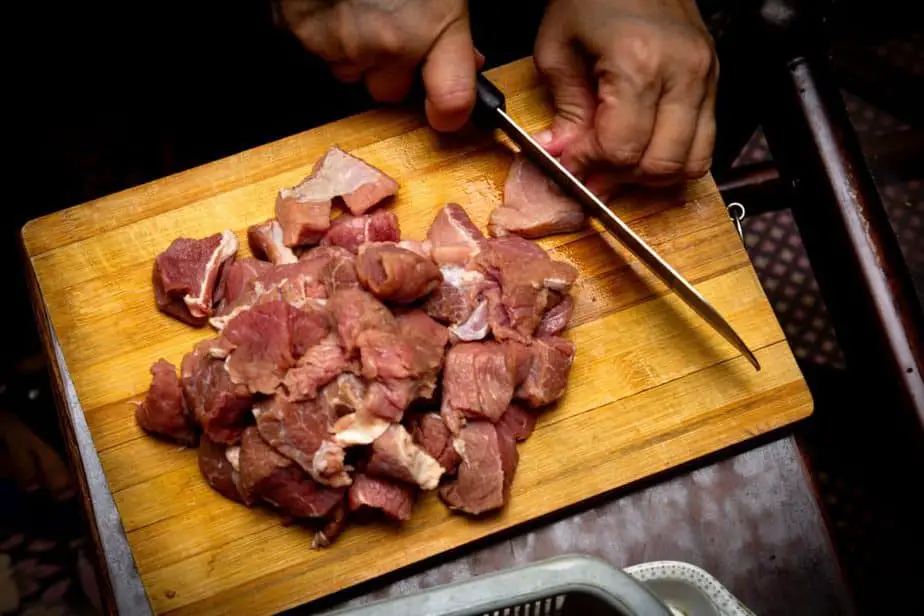
In this article we will know more about where does Cecina meat come from . Cecina meat is a Spanish delicacy that is salt-cured, air-dried beef. The meat is similar to ham and is made by curing cows, horses, rabbits, or hares. Cecina de Leon is known as the world’s best cecina. It is the hind legs of a cow that is salted, smoked, and air-dried. The old writings say it came from the 4th century B.C., and today’s process is the same as earlier. The cow cecina is prepared only from two indigenous breeds, Castile and Leon. The cecina is reddish-brown, and the flavor is salty and smokey. Do most people ask where cecina meat comes from? They are confused about their origin and meat. Here in this article, you will learn about cecina and a lot more information.
What is Cecina?
Cecina is the dried meat of cows, horses, rabbits, and the hare, which gets air-dried in the sun or smoked with some salt. It is a Spanish delicacy that associates modern Spain and Spanish cierzo or northern wind. Cecina de Leon is made of the hind legs of the cow and is known as the best cecina in the world. The making of authentic and original cecina has changed in a different continent. The variety of cecina and its process varies from region to region. In Mexico, the process of preparing cecina is different from the original way.
The Mexican style cecina is of two ways:
1) They cut the meat in a thin slice/sheet shape and are coated with red chili pepper paste. This type is called cecina enchilada. It needed to be cooked before consumption.
2) The meat is cut into pieces, then it is salted and marinated, then kept under the sun to dry. It is known as the beef version. People can consume it uncooked, and it is similar to prosciutto.
The Leon province
Cecina de Leon belongs to the province of Leon (mountainous north western region) of Spain. High altitude region is best suited for cecina, as they are warm, dry, and an ideal environment to cure meats. These regions teeming with wild games, so people master the art of curing meats. The most exports of cecina are from the Leon province.
Note: PGI (Protected Geographical Indication): It is a status awarded to promote regional food products. It is awarded by both the European Commission and the United Kingdom Government.
Where is the origin of the name cecina?
Most people get confused by the name of cecina, which originated in Spain. It is true Spain is the place from where the food originated. But its name is not of Spanish origin. The word cecina is not Spanish, although it is a Latin word. Cecina comes from the Latin word sicco, which means dry. You may hear several things, such as the Spanish word Cerezo meaning cherry, as it is red or brown, and many other rumors. The main thing that matters is that cecina is a gift from a genius that the whole world is enjoying.
Process of the making of cecina
Cecina is different from preserved meats. The making of cecina depends on the way it gets cured. Curing is the thing that makes this traditional dish different from other traditional delicacies. Later it is salted, air-dried, sun dried or smoked.
Here you get some detailed information about the making process of cecina.
1) Porfiado (Slicing): It is the first and the most delicate step of making cecina. Here, the butcher takes the meat and cuts it into thin slices. The slices should be thin like paper to give it delicate consistency.
2) Salado (Salting): It is the second step. Here, the sliced meat is covered with sea salt and kept for several days. Salado works as a preservative to the meat slices.
It does two things:
a) Flavors the meat.
b) Takes out all the moisture from the meat and keeps it safe from harmful bacteria.
3) Lavado (washing): Once the salt gets absorbed from the meat, it gets washed thoroughly. All the excess salt gets washed. This step is crucial because oversalt can make the meat unpalatable.
4) Asentamiento (Drying): During this step, the meat is laid out in the sun or hung up to dry. It can either be kept in a smokehouse or laid out in the sun.
5) Ahumado (smoking): Once the meat is dried it is smoked. This process is necessary to give more depth to the curing process. As the smoking gets completed, you will get a tough, brownish crust on the outer part of the meat. From inside it will be beautifully marbled. Yes, now it is ready to fulfill your appetizer.
Conclusion
Cecina is a regional delicacy of Spain, but it has marked its impact worldwide. Its beautifully marble inside texture with a crunchy outer part will make your pallet heavenly. Cecina is generally served as a snack. The Spanish cecina is the authentic and original one as the making process is traditional. Cecina is immensely popular in Mexico, central and south America. You can get cecina at your local stores. If not, you can order it online. For what are you making? Order it and have it as your daily snack.

